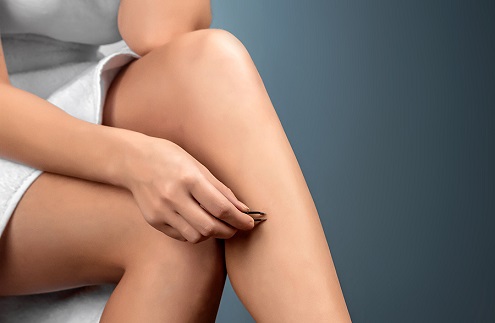Contents
Does hair grow back after pregnancy if you have had laser hair removal?
Does hair grow back after pregnancy – Laser hair removal is an increasingly popular way for women to achieve smooth, hairless skin. Using pulses of laser light, laser hair removal targets the hair follicles in the area being treated. This damages and turns off the follicles, stopping future hair growth.
Many women undergo laser hair treatments on their legs, underarms, upper lips, and bikini areas. They enjoy months or even years of freedom from unwanted hair growth and frequent shaving or waxing.
What Happens During Pregnancy
However, pregnancy brings many changes to a woman’s body, including sometimes surprising hair growth changes. High estrogen levels during pregnancy spark extra hair growth for some women, particularly in the pubic area. Many women notice their legs, underarms, and facial hair also grow faster and thicker.
After giving birth, hormone levels begin shifting back to pre-pregnancy states. Within six months to a year, new moms often lose the excess hair their bodies produce during those nine months of elevated pregnancy hormones.
The postpartum hair loss phenomenon centers around the scalp – where a noticeable amount of shedding and thinning occurs. Does hair that grows due to pregnancy hormones likewise shed a few months after birth if its follicles have been lasered years before conception?
How Laser Hair Removal Works
Laser hair removal uses selective photothermolysis to target dark pigment in hair follicles. The laser’s rays are attracted to the melanin in hair, heating the follicles.
The damaged follicles are no longer able to produce and support hair growth. Most patients need around six treatments spaced a month apart to turn off hair follicles in any given area fully.
Treatments are most effective when hair follicles are in their growing (anagen) cycle rather than dormant (telogen) cycle. The usual pattern involves some hair follicles reactivating down the road.
Follow-up annual touch-up treatments target hair follicles before excess regrowth occurs. Consistent treatments provide the best long-term reduction in unwanted hair.
Does Hair Grow Back After Pregnancy Following Laser Treatments?
Because pregnancy hormones shift the body’s hair growth cycles, some women do notice hair regrowth 9-10 months after giving birth, even in areas previously treated with laser hair removal.
However, this hair growth is typically finer and lighter than the original unwanted hair before laser treatments. (Does hair grow back after pregnancy)
The reasons pregnancy hormones generate some hair regrowth post-laser treatments include:
Pregnancy Shift in Hair Cycles Pregnancy hormones prolong the growing cycle for all body hair, stimulating extra growth. Hormones can also push more dormant follicles into the active cycle. This explains the thicker hair many women experience during those nine months.
Once the hormones drop off after the baby arrives, most hair goes back to its normal cycle. However, some formerly dormant follicles may have been woken up by the hormonal shift of pregnancy. These follicles may now produce some unwanted hair growth in lasered areas. (Does hair grow back after pregnancy)
Increased Blood Flow During Pregnancy
Boosted blood circulation to the skin also feeds hair follicles, supporting the hair growth cycle. Areas lasered pre-pregnancy often experience some hair regrowth toward the tail end of this increased blood flow phase, which lasts several months postpartum.
Change in Hair Texture and Color: Pregnancy and postpartum hormones may change the texture (coarser) and color (darker) of body hair. Since laser hair removal targets pigment in the hair, darker or more coarse hair has a better chance of being resistant to previous treatments.
However, women who had a full course of laser hair removal (5-6 treatments) pre-pregnancy typically enjoy long-lasting hair reduction that isn’t too negatively affected by this hair texture/color change. Touch-up treatments post-baby will address the slightly heavier regrowth some clients notice. (Does hair grow back after pregnancy)
Getting Back on Track Post-Pregnancy
To knock out postpartum hair regrowth in previously lasered sites, most women need 1-2 follow-up laser sessions. Spaced a month or so apart when hair cycles reactivate growth, touch-ups usually get unwanted hair back under control.
Using the right laser for one’s skin tone is also key to successfully targeting darker, coarser hairs. Working with an experienced laser technician ensures proper device settings and effective treatment.
While pregnancy can sometimes disrupt the long-term hair reduction plan from laser treatments obtained pre-baby, a little patience, and postpartum touch-ups get the desired smooth skin back on track.
Avoiding hormone-altering medications like birth control pills also supports keeping revved-up hair regrowth from recurring. Remaining patient through the ups and downs of post-baby hair cycles allows lasered areas to resume being hair-free long-term. (Does hair grow back after pregnancy)
In Conclusion
Pregnancy can stimulate extra hair growth due to hormone shifts, even in areas previously treated with laser hair removal, like the bikini line.
This hair growth typically peaks in the second trimester. Postpartum drops in estrogen and progesterone will then spark shedding and loss of most hair grown during pregnancy.
However, some increased hair regrowth can continue 9-12 months after giving birth as the body’s hormones continue stabilizing. This is especially true if pregnancy awakened previously dormant hair follicles now actively growing hair.
Don’t be discouraged by post-baby hair regrowth in lasered sites. Working with an experienced laser technician for a follow-up treatment or two addresses these awakened follicles.
Most women regain smooth, hair-free skin through supplemental laser sessions and patience with the body’s postpartum transition. Over time, pregnancy-stimulated hair growth eventually sheds. Then, lasered areas can return to being mostly hair-free once hormone levels normalize.
Thanks for visiting Teenage Pregnancy Feel Free to Give your valuable comments in comment section, and do not forget to share our website.

